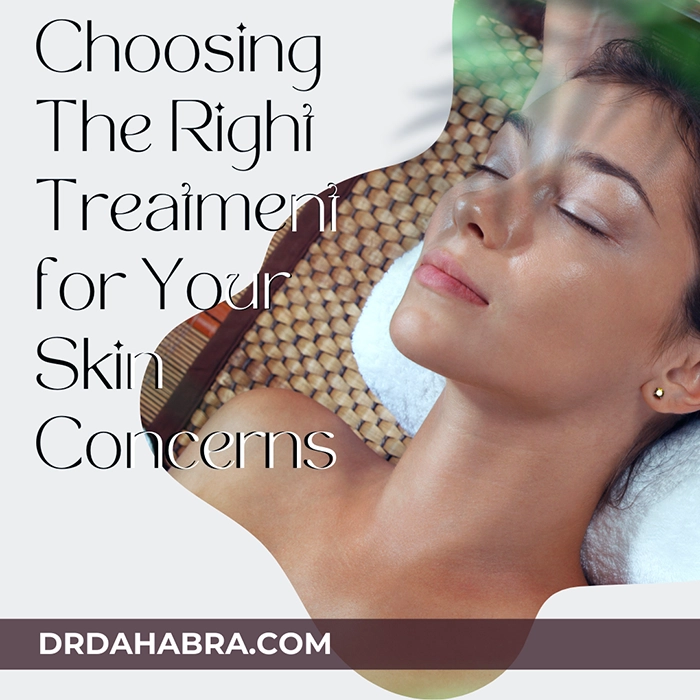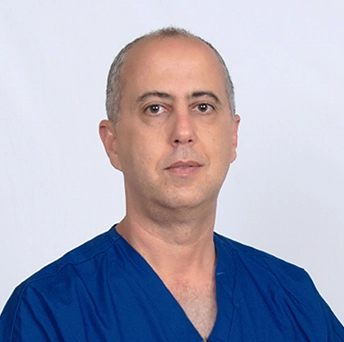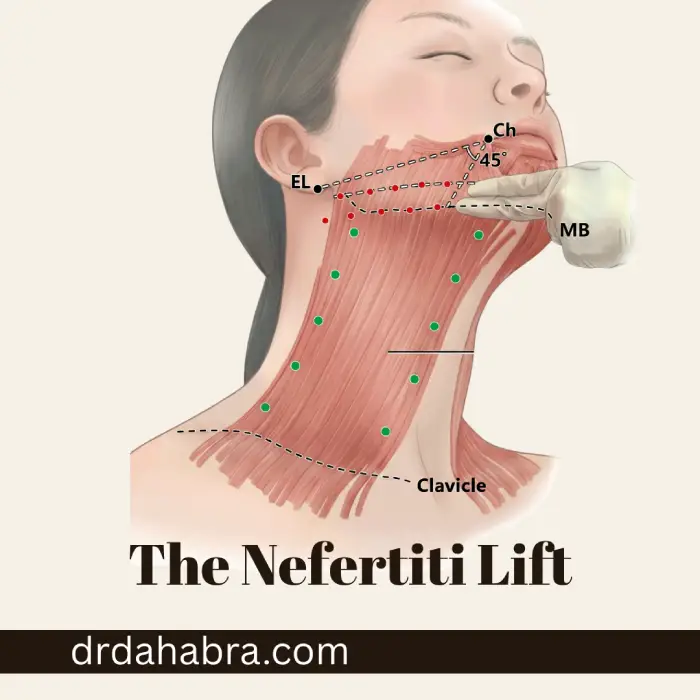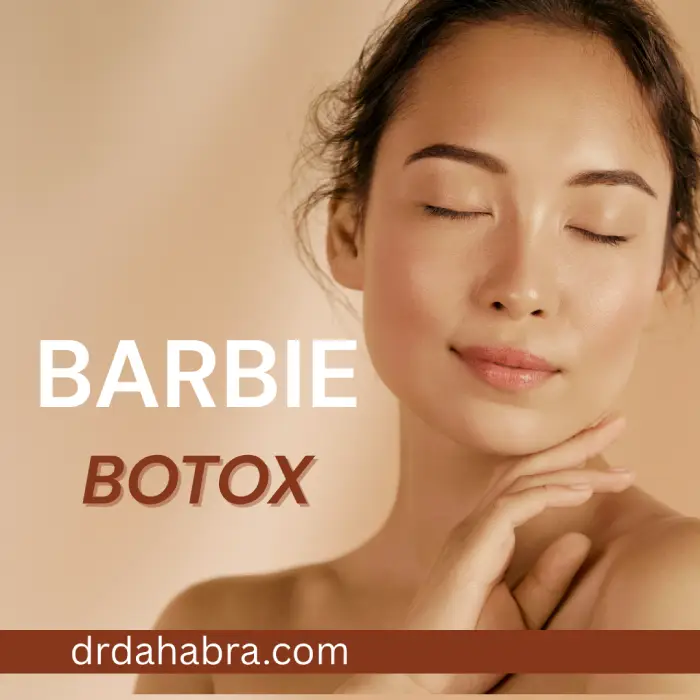From Dull to Glow: How HydraFacial, Microneedling & Peels Are Transforming Skin
What Are Multi‑Layered, Results‑Driven Facial Treatments?
Unlock a radiant, youthful glow with expert skincare: HydraFacial, microneedling, and chemical peels come together for multi‑layered, results‑driven facial transformations. This article is about expert insights on choosing the right treatment for your skin concerns.
By combining surface-level cleansing from HydraFacial with deeper stimulation from microneedling and smart exfoliation from peels, you address multiple layers of skin and concern all at once. This integrated approach ensures that every step works in harmony to banish dull skin and reveal a flawless, luminous complexion.
Think of it as building a skyscraper, not just laying a foundation. HydraFacial offers deep cleansing and hydration, microneedling triggers collagen induction therapy, and chemical peels resurface and correct discoloration.
Layering this trio fosters a powerful synergy that leaves your skin glowing, plumped, clear, and texture-perfect. Say goodbye to one-off fix‑ups and hello to long‑lasting, results‑driven facial treatments that truly transform.
Multi‑layering is more than trendy; it’s smart. HydraFacial for glowing skin preps your complexion, microneedling for acne scars builds real, lasting structure, and chemical peel for hyperpigmentation tackles remaining discoloration.
Layering them carefully, rather than doing just one, gives you that celebrity skin treatment finish that feels luxurious and delivers actual, measurable results.
Table of Contents
1. What Exactly Is a HydraFacial and How Does It Work?
2. What Exactly Is Microneedling and How Does It Work?
3. What Exactly Is a Chemical Peel and How Does It Work?
4. Why Should You Consider Combining These Facial Treatments?
5. How Do HydraFacial, Microneedling, and Peels Differ in Their Approach?
6. How Can You Determine Which Treatment Is Best for Your Skin Type?
7. Are the Results of HydraFacial, Microneedling, and Peels Permanent?
8. How Can You Maintain Your Results at Home?
9. What Are the Potential Side Effects and Risks Involved?
10. Why Is Professional Guidance Crucial for These Types of Treatments?
11. How Do HydraFacial, Microneedling, and Peels Differ from Traditional Facials?
12. What Are the Pros and Cons of Each Treatment for Dark Spots and Hyperpigmentation?
13. Are At‑Home Alternatives as Effective as Professional Facials?
14. How Often Should I Get Microneedling or Chemical Peels for Lasting Results?
15. Frequently Asked Questions (FAQs)
16. Conclusion
17. References
1. What Exactly Is a HydraFacial and How Does It Work?
HydraFacial is a non‑invasive, multi‑step facial that deeply cleanses, exfoliates, extracts, and infuses potent serums using vortex technology.
It delivers a trifecta: deep cleansing and exfoliation, hydration and nourishment, and visible glow, all in one seamless flow. This makes HydraFacial the go-to for the best facial for dull skin.
During treatment, the device vacuums away impurities while serum cocktails deliver antioxidants and peptides. It’s customizable: add LED light therapy or lymphatic drainage to target specific concerns like puffiness or texture.
Most users see immediate improvement in skin texture and radiance, yes, it’s genuinely that effective.
Because it’s gentle yet thorough, HydraFacial benefits for skin include pore clearing, fine line smoothing, and brightening. Plus, with zero downtime, it’s easy to pop in before events or as part of a multi-step facial routine in 2025.
If you want fast, glowing, safe results, this is where you start.
2. What Exactly Is Microneedling and How Does It Work?
Microneedling, also called collagen induction therapy, is a minimally invasive facial treatment using ultra-fine needles to create controlled micro-injuries in the skin.
This stimulates your body’s healing processes, boosting collagen and elastin and resulting in improved skin texture, tone, and structure. Over time, fine lines soften, pores appear smaller, and even acne scars start to smooth.
Though not instant, the new collagen takes time to form, but that means long‑lasting results. Many notice gradual refinements in texture and glow thanks to this collagen-boosting facial treatment, plus the ability to absorb nourishing serums more deeply after puncturing the skin barrier safely.
When paired with microneedling for acne scars, these micro‑channels enhance product penetration and speed change. Practices like microneedling with PRP 2025 are also trending, offering more power, natural healing, and stronger outcomes from a single device.
3. What Exactly Is a Chemical Peel and How Does It Work?
Chemical peels exfoliate by applying acids, like glycolic, salicylic, or TCA, to dissolve and shed dead skin layers, prompting improved cell turnover, cell renewal, and skin resurfacing treatments. You get smoother, brighter skin, and it’s especially powerful on stubborn problems like hyperpigmentation, uneven tone, or acne scarring.
Different strengths, from gentle to deep, can be tailored to your skin type and concern. A gentle chemical peel for summer lightens without intense peeling, while deeper formulas fade deeper discoloration and fine lines.
This makes them a stellar solo or complementary treatment to amplify visibility and texture.
Customizable treatment options give controlled results. These peels for hyperpigmentation can bring clarity where spot treatments fall short and are part of the professional facial treatments toolkit.
4. Why Should You Consider Combining These Facial Treatments?
Combining HydraFacial, microneedling, and chemical peels offers synergistic effects that amplify results beyond what each can do alone.
HydraFacial cleanses and primes, microneedling triggers collagen, and peels resurface, all work together to improve texture, tone, and radiance at multiple layers. Skin heals deeper, glow lasts longer.
A targeted approach: use microneedling and chemical peel for tough acne scars and pigmentation problems, then follow with HydraFacial to soothe, hydrate, and fast-track recovery. It’s a layered strategy that keeps skin healthy while maximizing improvements.
This approach provides faster, more effective improvements in overall skin health and appearance, particularly appealing to those seeking advanced or celebrity-inspired skincare treatments that avoid invasive procedures.
5. How Do HydraFacial, Microneedling, and Peels Differ in Their Approach?
HydraFacial: gentle, hydrating, exfoliating, and immediate, with low downtime, instant glow.
Microneedling: minimally invasive, collagen stimulation with gradual but lasting results. Chemical peels involve controlled exfoliation, leading to more profound changes, but they also carry the potential for peeling or downtime.
HydraFacial vs microneedling: one is about hydration and glow, the other about stimulating new tissue growth. Peels dive deeper into aging or pigment issues.
Each has a distinct strength, which is why comparing hydrafacial vs microneedling results often leads people to choose both. Over time, they build beautiful skin.
Understanding these beyond labels, non‑invasive facial rejuvenation (HydraFacial), collagen induction therapy (microneedling), and skin resurfacing treatments (peels), lets you pick what your skin needs at that moment.
6. How Can You Determine Which Treatment Is Best for Your Skin Type?
If your skin is delicate or reactive, HydraFacial for glowing skin is safe, hydrating, and soothing.
For oily or scarred skin needing collagen, microneedling for acne scars is ideal, ensuring safe microneedling practices. If you struggle with pigment issues, a chemical peel for hyperpigmentation can be tailored to your sensitivity.
Combination treatments, such as microneedling and chemical peel, or HydraFacial followed by a peel, can be scheduled with professional guidance. Personalization matters: what suits one person may irritate another.
That’s why the best aesthetic skin treatments respect your skin type.
Evaluating your priorities, hydration, texture, and discoloration helps determine when to use which and how often.
Sensitive skin may prefer gentle peels and HydraFacial, whereas mature or sun-damaged skin can benefit from structured layering involving microneedling and deeper peels.
7. Are the Results of HydraFacial, Microneedling, and Peels Permanent?
Results from HydraFacial are immediate but temporary, making it great for achieving an instant glow, improving pore clarity, and enhancing skin texture. Maintenance every 4‑8 weeks is often recommended to sustain the glow and improvements.
Microneedling offers more lasting structural improvements by boosting collagen, though seasonal top‑ups help maintain elasticity and texture.
Chemical peels can deliver longer‑lasting changes depending on depth. Deep peels address fine lines and discoloration more permanently, but still require sun protection and occasional refreshers to preserve results.
No treatment is truly permanent, but strategically combining and following up care can yield long‑lasting improvement in reducing fine lines, improving skin texture, and maintaining a celebrity-like glow.
8. How Can You Maintain Your Results at Home?
Hydrating, antioxidant-rich serums maintain post‑treatment glow.
Use gentle sunscreen faithfully, especially after a chemical peel or microneedling. Follow post-facial skin care tips: use calming cleansers, apply barrier-repair creams, and avoid harsh scrubs or retinoids too soon after treatments.
Implement a multi-step facial routine at home in 2025: clean, hydrate, protect, and nourish to extend the salon’s impact. Products rich in peptides, hyaluronic acid, and antioxidants help keep that glowing complexion alive.
Seasonal facial treatments for glow cycle with your home routine: lighten up in summer with gentle peels, and boost hydration in drier months. Stay consistent, and great skin is maintained.
9. What Are the Potential Side Effects and Risks Involved?
HydraFacial: minimal risks, some irritation or breakouts, but they fade quickly.
Microneedling: mild redness, pinpoint bleeding, sensitivity; using safe microneedling practices and proper pre- and post-care reduces risk.
Chemical peels: peeling, redness, sensitivity, and sun sensitivity, depending on strength.
Deep peels, in particular, require professional follow-through with chemical peel aftercare to avoid complications.
Combination treatments must be expertly timed to avoid overstimulation or irritation. Professional guidance is crucial here.
10. Why Is Professional Guidance Crucial for These Types of Treatments?
Expert skin therapists or dermatologists can intelligently combine HydraFacial, microneedling, and chemical peels to create personalized, safe, results‑driven facial treatments. They assess skin conditions, select appropriate tools and formulas, and ensure safe microneedling practices and chemical peel aftercare.
Combining treatments like microneedling and chemical peels amplifies results but also risks; staggering sessions, customizing depths, and monitoring recovery are essential.
Professionals also guide you in choosing between traditional facials and advanced options, adjusting protocols for sensitive skin, mature skin, and specific concerns like hyperpigmentation, to maximize benefit and minimize risk.
11. How Do HydraFacial, Microneedling, and Peels Differ from Traditional Facials?
Traditional facials often include cleansing, masks, extraction, maybe massage or hydration, but they rarely penetrate deeply or stimulate structural change. HydraFacial, microneedling, and peels are advanced skincare treatments with measurable impact on collagen, tone, texture, and hydration.
These professional facial treatments disrupt just enough skin layers to activate healing or turnover, making results far more dramatic and lasting. Traditional options soothe only surface-level dullness.
These advanced options, including multi-step HydraFacial, microneedling for collagen, and skin resurfacing peels, deliver more effective, tailored, and long-lasting results than the typical spa facial.
12. What Are the Pros and Cons of Each Treatment for Dark Spots and Hyperpigmentation?
HydraFacial:
Pros: gentle, immediate glow, safe for sensitive skin, customizable boosters for hyperpigmentation.
Cons: less powerful on stubborn dark spots alone.
Microneedling:
Pros: stimulates collagen, helps fade acne scars and texture unevenness; enhances serum absorption
Cons: less targeted on pigment alone without additional agents.
Chemical Peels:
Pros: effective at fading hyperpigmentation and dark spots when depth is appropriate.
Cons: More downtime, and it can’t be used too deeply on dark skin tones without risk. Chemical peel aftercare is critical.
Combining microneedling and peels yields powerful results for texture and pigmentation, but requires professional management.
13. Are At‑Home Alternatives as Effective as Professional Facials?
At-home devices and masks can offer minor improvements, hydration, gentle exfoliation, and glow at best. But they lack the power of professional tools like HydraFacial’s vortex-infused serums, collagen induction from microneedling, or the controlled formulation of chemical peels.
DIY methods like dermarollers, light peels, or masks may offer mild benefits, but they don’t compare to advanced skincare treatments. They also carry risk when done incorrectly, especially microneedling or peeling at home.
At-home maintenance complements, but doesn’t replace, professional and results‑driven facial treatments. Trust the experts for real change.
14. How Often Should I Get Microneedling or Chemical Peels for Lasting Results?
Experts often recommend facials every 4‑8 weeks, which aligns with your skin’s cell turnover cycle. HydraFacial may be done monthly for a sustained glow.
Microneedling is typically done every 4‑6 weeks for a series of sessions, depending on skin goals. Chemical peels: Light peels can be monthly; medium-to-deep peels may only be repeated every few months under supervision.
Your cadence should reflect your goals, downtime, and skin’s response. A tailored plan ensures long‑lasting improvement with minimal irritation or risk.
15. Frequently Asked Questions (FAQs) about Expert Insights on Choosing the Right Treatment for Your Skin Concerns
Q1. What are the benefits of microneedling and hydrafacial?
Concise Answer: Both offer smoother skin, HydraFacial hydrates and brightens instantly; microneedling stimulates collagen for acne scar and texture improvement.
Detailed Answer: HydraFacial delivers deep cleansing, gentle exfoliation, and nourishing hydration for an immediate glow, pore clarity, and improved texture, while microneedling promotes collagen induction therapy that can diminish acne scars, fine lines, and large pores over time.
Combining them can offer both immediate radiance and long-term structure improvement.
Q2. How does skin change after microneedling?
Concise Answer: Your skin often looks red and plumped first, then gradually becomes firmer, smoother, and more even-toned as collagen builds.
Detailed Answer: Immediately, you may experience mild redness or micro-inflammation, similar to sunburn.
Over days to weeks, your skin starts repairing itself by producing collagen and elastin, resulting in refined texture, reduced pore size, smoother tone, and a more youthful, luminous complexion.
Q3. Can you do a hydrafacial and microneedling together?
Concise Answer: Yes. HydraFacial can prep skin before microneedling, and soothe it afterward for maximized results and reduced downtime.
Detailed Answer: Combining HydraFacial with microneedling is smart because HydraFacial clears debris and hydrates the skin, making microneedling safer and more effective; followed by another HydraFacial, it calms inflammation and improves absorption of soothing serums, delivering firmer, smoother, plumper skin with minimized irritation.
Q4. What are the benefits of a hydrafacial chemical peel?
Concise Answer: It gives deep cleansing, hydration, and gentle exfoliation from a peel in one relaxing, practical session.
Detailed Answer: The HydraFacial includes a light chemical peel step, typically salicylic or glycolic acids, within its three-phase treatment to boost cell turnover, break down oil and dead cells, then infuses rich hydration and antioxidants to soothe and repair. It leaves skin clear, soft, bright, and balanced, with minimal irritation.
Q5. What Should You Expect During Your First Consultation?
Concise Answer: Expect skin analysis, discussion of goals, timelines, suitable treatments, and a personalized plan including downtime and cost.
Detailed Answer: Your provider will evaluate your skin type, concerns like dullness, scarring, or pigmentation; discuss options such as HydraFacial for glowing skin, microneedling for acne scars, or chemical peel for hyperpigmentation; explain benefits, downtime, cost of HydraFacial, microneedling downtime, chemical peel aftercare; and tailor a safe, effective multi-layered treatment plan.
Q6. How Do You Prepare Your Skin for These Advanced Treatments?
Concise Answer: Avoid retinoids, sun exposure, exfoliants before treatment, and hydrate well; follow your provider’s guidelines.
Detailed Answer: Preparation may involve avoiding harsh actives like retinoids or acids for a few days, wearing SPF consistently, stopping waxing or harsh scrubs, and ensuring your skin is well‑hydrated and healthy. This helps reduce the risk of irritation from microneedling or peels and maximizes outcomes.
Q7. What Is the Expected Downtime for Each Procedure?
Concise Answer: HydraFacial: little to no redness; microneedling: 1–3 days of redness; peels: depends, light is minimal, deep can peel for a week.
Detailed Answer: HydraFacial offers an instant glow with minimal downtime. In contrast, microneedling typically causes light redness or swelling for up to 3 days. Chemical peel downtime varies; gentle peels may show slight flaking, while deeper peels can require a week of peeling and heightened aftercare.
Always follow chemical peel aftercare instructions diligently.
Q8. How Long Will It Take to See Visible Results?
Concise Answer: HydraFacial results are immediate; microneedling takes several weeks to build collagen; peels show fresh skin in days to weeks.
Detailed Answer: Right after HydraFacial, your skin looks brighter with a smoother texture. Microneedling brings gradual improvement as new collagen forms, usually visible in 4–8 weeks.
Chemical peels begin revealing smoother, clearer skin once peeling subsides, often within a week for light to medium peels.
Q9. Are These Treatments Painful?
Concise Answer: HydraFacial is gentle and pain‑free; microneedling may require numbing, but is tolerable; stronger peels may sting briefly.
Detailed Answer: HydraFacial is smooth and relaxing with no discomfort. Microneedling uses topical numbing and may feel like mild pricking or pressure.
Chemical peels, especially deeper ones, can sting or burn briefly but are managed professionally with soothing layers and care.
Q10. Microneedling for acne scars: how many sessions until I see a real difference?
Concise Answer: Many see improvement after 3–6 sessions spaced about a month apart.
Detailed Answer: For acne scar reduction, providers often recommend a series of 3 to 6 microneedling sessions spaced every 4–6 weeks. This allows collagen to build between treatments and gradually smooth texture and tone over time.
Q11. Which chemical peel is best for hyperpigmentation on sensitive skin?
Concise Answer: Gentle peels using mandelic or lactic acid are best for sensitive skin, addressing hyperpigmentation with minimal irritation.
Detailed Answer: For sensitive skin with hyperpigmentation, mild peels, like mandelic or lactic acid, offer gradual cell turnover and brightening without aggressive peeling. A dermatologist‑recommended facial peel regimen tailored to sensitive skin tone is safest and most effective.
Q12. How soon after microneedling can I wear makeup?
Concise Answer: Usually within 24 hours if your skin is calm, or wait until redness subsides a bit to avoid irritation.
Detailed Answer: You can typically apply gentle makeup 24 hours post‑microneedling, but it’s best to wait until redness eases and use non-comedogenic, soothing products to avoid clogging microchannels or causing irritation.
Q13. What’s the best treatment for stubborn blackheads: HydraFacial, microneedling, or a peel?
Concise Answer: HydraFacial is best, as it deeply extracts and infuses hydrating serums to clear blackheads with minimal irritation.
Detailed Answer: HydraFacial extracts impurities and clears blackheads in one go, while hydrating and smoothing, making it ideal for stubborn congestion. Microneedling and peels may help over time, but are less targeted for blackhead clearing.
Q14. Can melasma be successfully treated with a series of chemical peels?
Concise Answer: Yes, superficial to medium chemical peels can fade melasma, but often need maintenance and sun protection.
Detailed Answer: Chemical peels, especially milder formulas, can lighten melasma by promoting cell turnover if done cautiously and repeatedly. With consistent sun protection and maintenance, significant improvement is possible, though melasma often requires ongoing care.
Q15. Why didn’t my skin glow after a HydraFacial?
Concise Answer: Possible causes: skin wasn’t prepped well, underlying dehydration, or you may need a customized booster or hydration follow-up.
Detailed Answer: If you didn’t get that glow, reasons might include underlying dehydration, missed booster selection, or your skin needing deeper intervention like added hydration or exfoliation.
Discuss the 2025 hydrafacial cost comparison with your provider and consider boosters to enhance your glow next time.
16. Conclusion: Expert Insights on Choosing the Right Treatment for Your Skin Concerns
Embarking on the journey from Dull to Glow with Powerful Multi‑Layered Facial Treatments isn’t a superficial makeover; it’s a transformative experience that nurtures your skin from surface radiance to profound structural renewal.
When HydraFacial cleanses and hydrates, microneedling strengthens collagen architecture, and chemical peels refine and even out tone, you’re not just looking radiant, you’re glowing from within.
Imagine stepping into a world where dullness, fine lines, acne scars, and hyperpigmentation fade away, replaced with a supple, luminous canvas, carefully crafted by layers of expert treatments and boosted with at-home routines.
These professional facial treatments are more than indulgence; they’re real, results-driven facial transformations that feel like self-care but deliver structural health.
Choosing this pathway is choosing confidence, youthful vibrance, and skin that feels as good as it looks.
It’s about investing in your best skin now and creating a lasting routine and plan.
From the first buzz of a HydraFacial wand to the healing glow after a microneedle session or peel, you’re unveiling the radiant, resilient, flawless you.
We have covered everything about expert insights on choosing the right treatment for your skin concerns.
Expert Insights on Choosing the Right Treatment for Your Skin Concerns
Expert insights on choosing the right treatment for your skin concerns with Dr. Dahabra. Why wait to unlock your beauty?
Call us now at (954) 595-2607 or book online. Your journey begins with just a click or a call.
Embrace the beauty, embrace innovation – Embrace You.
17. References
Beverly Hills Wellness Center & Med Spa, Florida
Efficacy and Tolerability of HydraFacial Clarifying Treatments in Acne
Source: R Storgard et al., 2022 (NIH / PubMed Central)
Summary: A 12-week open-label study showing that six HydraFacial Clarifying Treatments significantly improved skin appearance for individuals with mild-to-moderate acne.
Double‑blind RCT: Microneedling vs Chemical Peeling vs Combination for Atrophic Acne Scars
Source: A Pakla‑Misiur, 2021 (NIH / PubMed Central)
Summary: A randomized, double-masked controlled trial found that combining microneedling and chemical peeling produced the best objective results and quality-of-life improvements for treating atrophic post-acne scars.
Recent Advances in Microneedling‑Assisted Cosmetic Procedures
Source: R Hamed et al., 2024 (MDPI)
Summary: Reviews recent developments, including combining microneedling with chemical peels (like GA and TCA), PRP, and Jessner’s Peel, finding improved outcomes in atrophic acne scars and skin resurfacing.
Combined Soft Peeling and Microneedling for Facial Aging
Source: R Amore et al., 2021 (MDPI Applied Sciences)
Summary: A multicenter study demonstrating that combining soft chemical peeling with microneedling significantly reduced facial wrinkles across various skin types with minimal downtime.
Expert Consensus on the Clinical Application of Chemical Peels
Source: Chinese Society of Dermatology, 2024 (MedNexus)
Summary: A structured expert guideline covering classification, agents, mechanisms, indications, and best practices for safely and effectively using chemical peels in clinical settings.
Novel Professional‑Use Synergistic Peel Technology (TCA‑ and Hydroquinone‑Free)
Source: V Bhardwaj et al., 2024 (Wiley – Experimental Dermatology)
Summary: Investigates a new peel formulation free of TCA and hydroquinone, exploring its mechanism and potential for professional skin resurfacing with reduced side effects.
Combination Peel (6% TCA + 12% Lactic Acid) for Facial Photoaging
Source: James Fanning et al., 2023 (Journal of Cosmetic Dermatology)
Summary: A prospective study showing significant improvements in clarity, pigmentation, fine lines, and brightness after three treatments of a combined peel.
Microneedling with n‑3 PUFA‑Rich Formulation to Boost Healing and Luminosity
Source: R Wong et al., 2023 (Springer – Dermatology and Therapy)
Summary: A split-face RCT showing that microneedling combined with omega‑3 PUFA-rich topical formulation accelerated healing, reduced inflammation, and enhanced post-procedure luminosity and texture.
Microneedling vs 35% Glycolic Acid Chemical Peel for Acne Scars
Source: Fatima Ishfaq et al., 2022 (Journal of Clinical and Aesthetic Dermatology)
Summary: A comparative RCT showing microneedling achieved better acne scar improvement (73%) compared to glycolic acid peels (33%), particularly in darker skin tones.
Review of Skin Needling (Collagen Induction Therapy) for Acne Scarring
Source: Alessia Villani et al., 2020 (Journal of Cosmetic Dermatology)
Summary: A comprehensive review showing microneedling is well-tolerated and effective for acne scars; combining it with peels, PRP, and other modalities enhances results.




